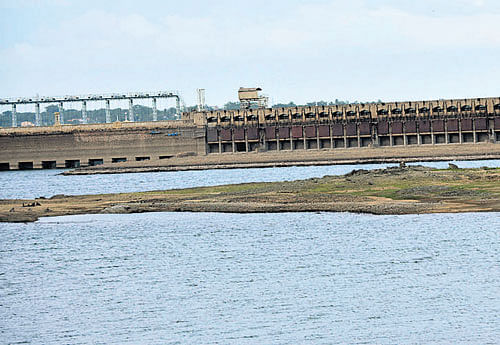Dry days loom over city as water level in KRS down 20%
Last Updated IST

The current water level in the dam is 84.75 ft, down from 105.57 ft in the corresponding period last year. DH file Photo
The water level in the Krishnaraja Sagar (KRS) reservoir, which is the main source of drinking water to Bengaluru, has dipped by 20% this year, in what is an ominous sign of a water crisis.
The current water level in the reservoir is 84.75 feet, down from 105.57 feet in the corresponding period last year. The reduction may pose a major challenge to the Bangalore Water Supply and Sewerage Board (BWSSB) to supply Cauvery water to the city in the coming months.
As on Tuesday (September 20), the gross storage of water in the KRS stood at 13.04 tmcft. Excluding the dead storage level of 4.66 tmcft, the remaining 8.64 tmcft is being pumped to Bengaluru, 44 towns and 650 villages. What this means is that the percentage of gross water storage in the KRS is just 26.37, less than half of 55.61% in the corresponding period last year.
The water storage in other reservoirs has also seen a dip compared with the last year. The percentage of gross water storage in Kabini is 58.61 (73% last year), Hemavathy 26.37 (55.61% last year) and Harangi 50.64 (64.85% last year).
The inflow into the KRS was at the rate of 2,270 cusecs as on September 20. Officials said the figure stood high as water was supplied from Harangi and Hemavathy reservoirs given that there was little rain in the catchment areas of Cauvery. “The figures were much better last year despite the drought. The storage of 8.641 tmcft is enough for drinking requirements provided that water is not released for irrigation,” a senior official noted.
BWSSB Chairman Tushar Girinath said that the board was preparing a contingency plan to supply drinking water to all households. “We will seek grants from the state government under the disaster management fund to supply groundwater by tankers in case of emergency. The situation is manageable until January,” he told DH.
Prof T V Ramachandra from the Indian Institute of Science (IISc) has urged the government to prioritise drinking water over irrigation in the coming months. “Farmers should think of cultivating alternative crops like millet in the dry districts instead of opting for sugarcane and paddy that need more water. There is gross mismanagement of water across the country,” he said. The professor said there was a lack of scientific assessment of the water availability and requirement of both Karnataka and Tamil Nadu that was free from political interference.
The current water level in the reservoir is 84.75 feet, down from 105.57 feet in the corresponding period last year. The reduction may pose a major challenge to the Bangalore Water Supply and Sewerage Board (BWSSB) to supply Cauvery water to the city in the coming months.
As on Tuesday (September 20), the gross storage of water in the KRS stood at 13.04 tmcft. Excluding the dead storage level of 4.66 tmcft, the remaining 8.64 tmcft is being pumped to Bengaluru, 44 towns and 650 villages. What this means is that the percentage of gross water storage in the KRS is just 26.37, less than half of 55.61% in the corresponding period last year.
The water storage in other reservoirs has also seen a dip compared with the last year. The percentage of gross water storage in Kabini is 58.61 (73% last year), Hemavathy 26.37 (55.61% last year) and Harangi 50.64 (64.85% last year).
The inflow into the KRS was at the rate of 2,270 cusecs as on September 20. Officials said the figure stood high as water was supplied from Harangi and Hemavathy reservoirs given that there was little rain in the catchment areas of Cauvery. “The figures were much better last year despite the drought. The storage of 8.641 tmcft is enough for drinking requirements provided that water is not released for irrigation,” a senior official noted.
BWSSB Chairman Tushar Girinath said that the board was preparing a contingency plan to supply drinking water to all households. “We will seek grants from the state government under the disaster management fund to supply groundwater by tankers in case of emergency. The situation is manageable until January,” he told DH.
Prof T V Ramachandra from the Indian Institute of Science (IISc) has urged the government to prioritise drinking water over irrigation in the coming months. “Farmers should think of cultivating alternative crops like millet in the dry districts instead of opting for sugarcane and paddy that need more water. There is gross mismanagement of water across the country,” he said. The professor said there was a lack of scientific assessment of the water availability and requirement of both Karnataka and Tamil Nadu that was free from political interference.